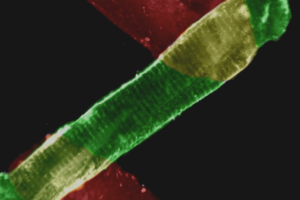Kuramochi Y1, Guo X, Sawyer DB, Lim CC
Abstract:
Chronic tachycardia in patients and rapid pacing in animal models induce myocardial dysfunction and initiate a cascade of compensatory adaptations that are ultimately unsustainable, leading to ventricular enlargement and failure. The molecular pathogenesis during the early stages of tachycardia-induced cardiomyopathy, however, remains unclear. We utilized our previously reported cell culture pacing system to directly assess phosphatidylinositol-3-kinase (PI3K)/Akt and mitogen-activated protein kinase (MAPK) signalling of adult rat ventricular myocytes (ARVM) in response to rapid electrical stimulation. Freshly isolated ARVMs were maintained quiescent (0 Hz), or continuously stimulated at 5 (normofrequency) and 8 Hz (rapid frequency). Pacing resulted in an increase in mitochondrial respiration, assessed by mitochondrial uptake of 3-(4,5-dimethylthiazol-2-yl)-2,5-diphenyltetrazolium bromide (MTT) at 48 h. Rapid pacing at 8 Hz significantly increased cell injury and death as assessed by Trypan Blue uptake, creatine phosphokinase release, and terminal deoxynucleotidyl transferase-mediated dUTP nick end labelling (TUNEL) assay. Pacing at 5 Hz induced early, but weak, activation of Akt and protein kinase 38 (p38). Rapid pacing further augmented the early activation of Akt and p38, and induced extracellular signal-related kinase (Erk) and c-jun amino terminal kinase (JNK) activation. Incubation of ARVM with PI3K inhibitor LY294002 resulted in a twofold increase of TUNEL-positive cells under all pacing conditions examined. In conclusion, rapid pacing has immediate and detrimental consequences for cardiomyocyte survival, with pro-apoptotic pathways (e.g. JNK, p38) able to overwhelm antiapoptotic signalling (PI3K/Akt, Erk). The rapid pacing methodology described in this report will be particularly useful in determination of cell signalling pathways associated with tachycardia-induced cardiomyopathy.






